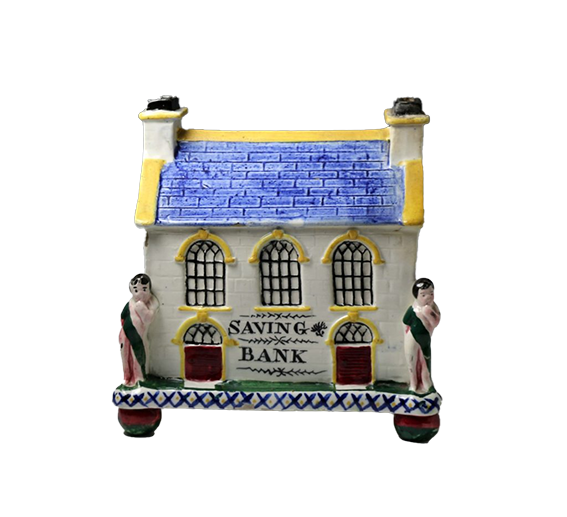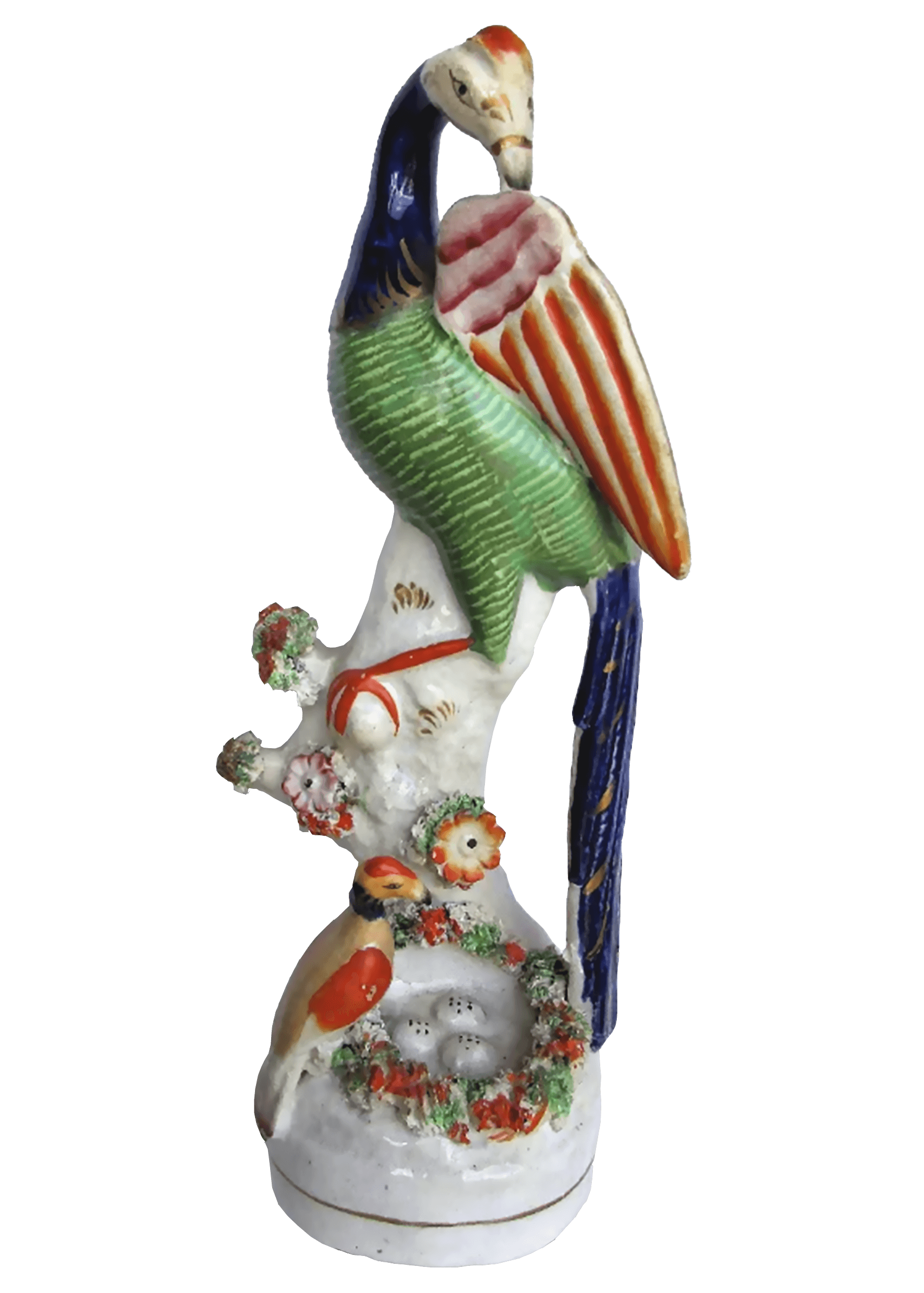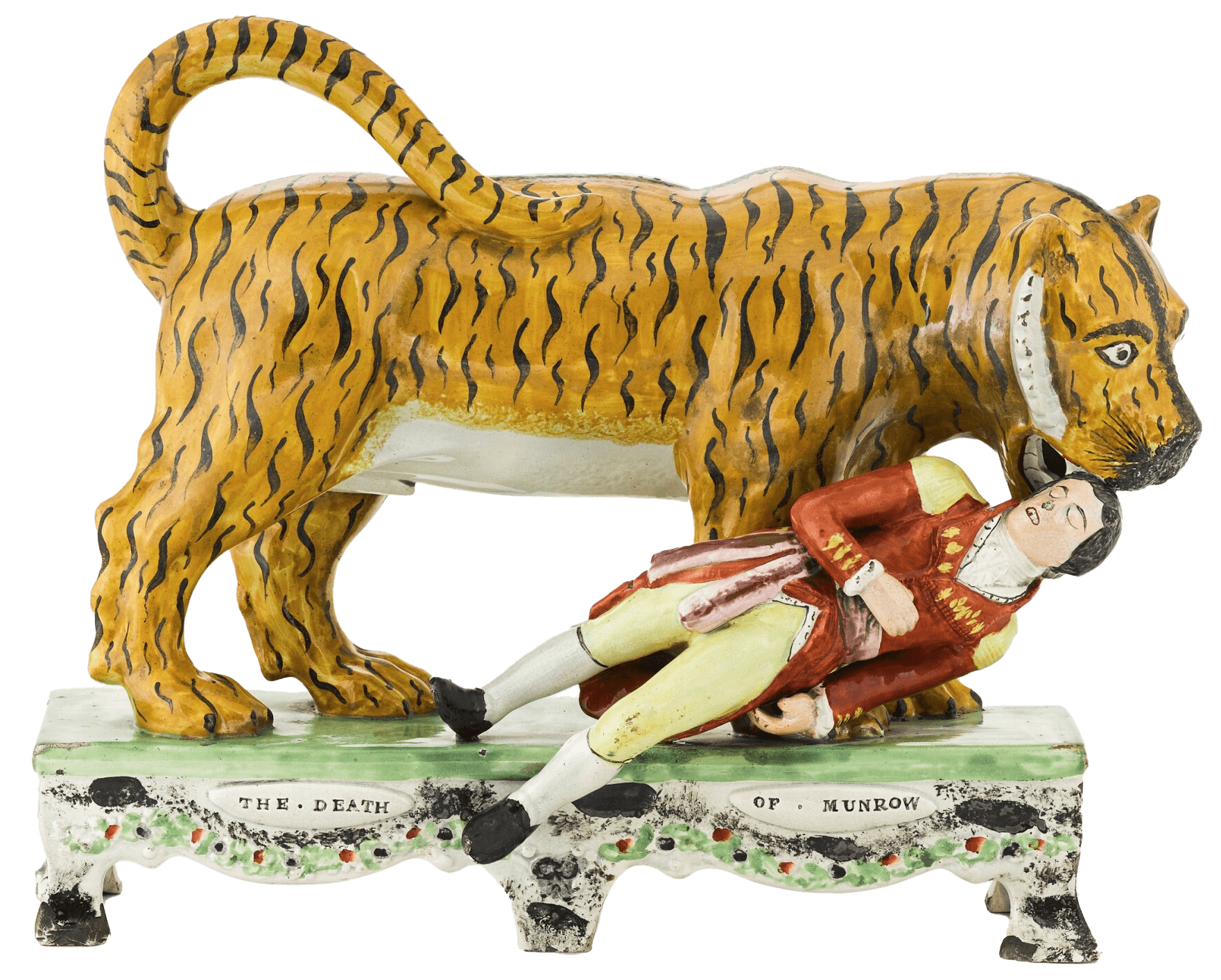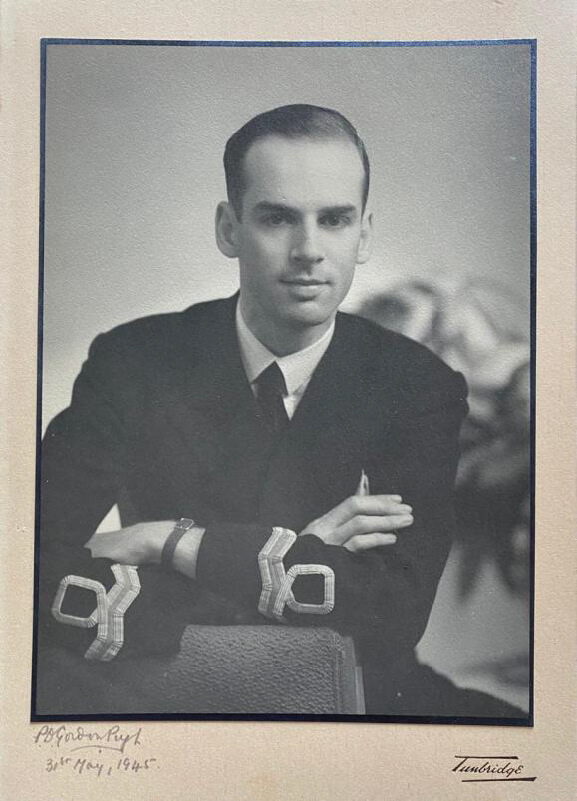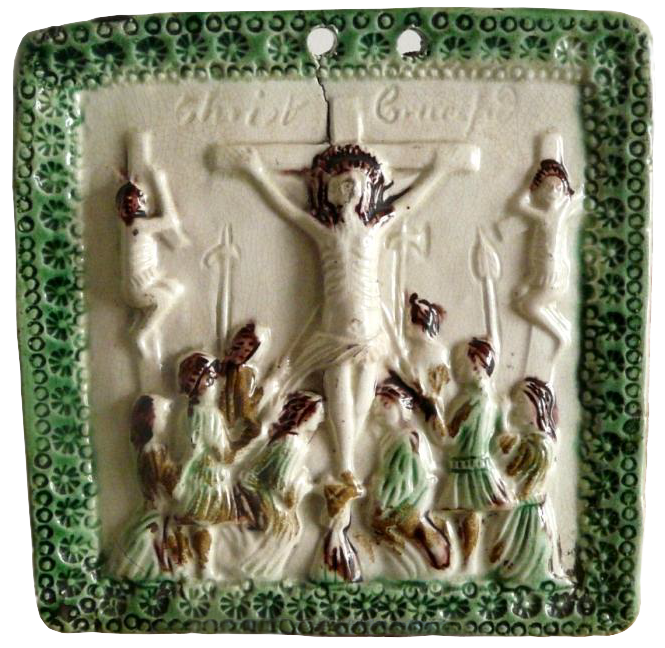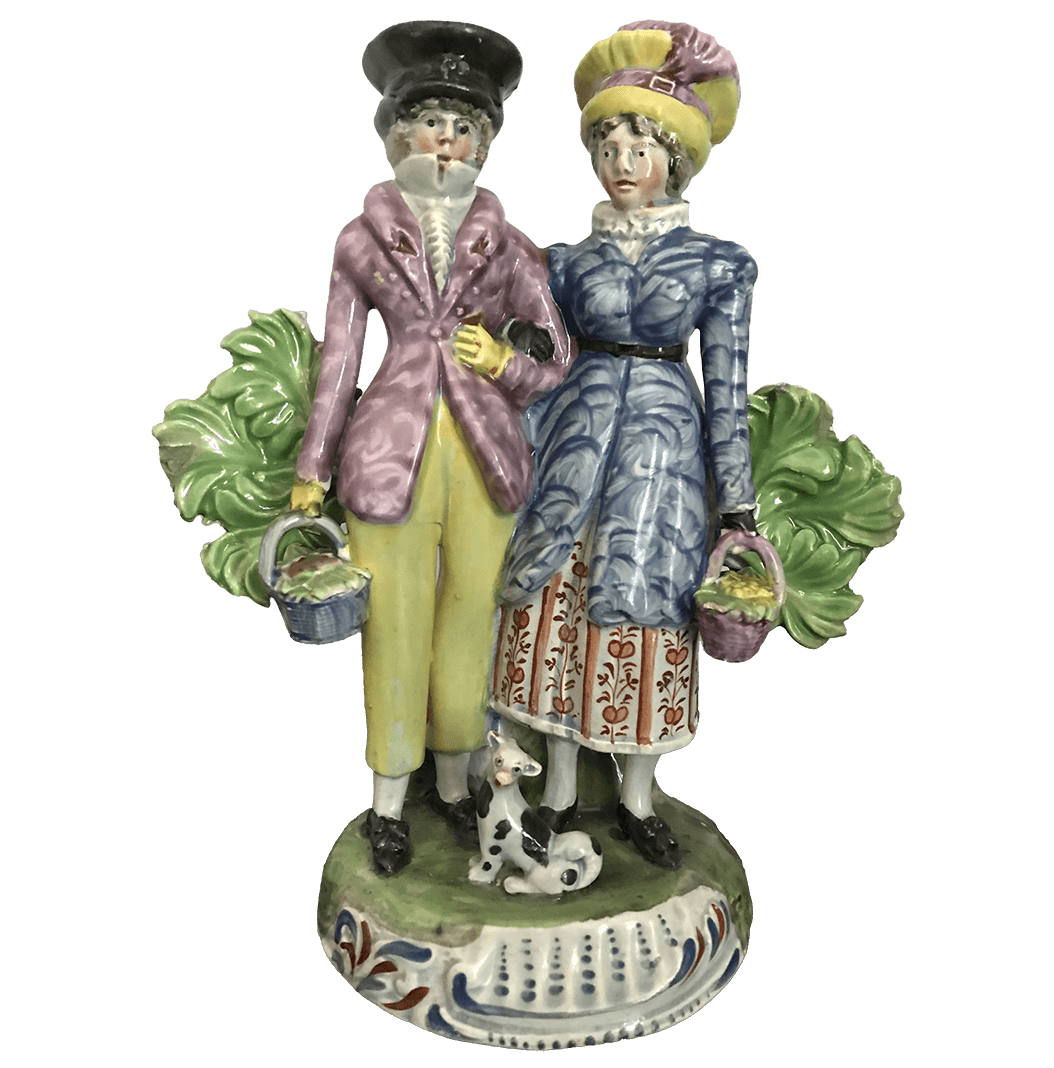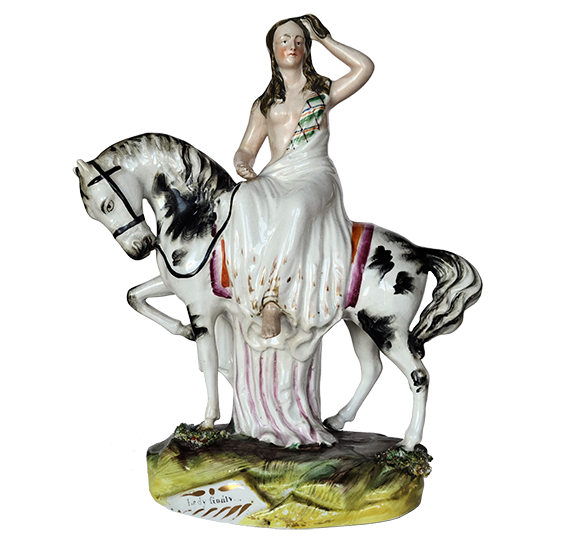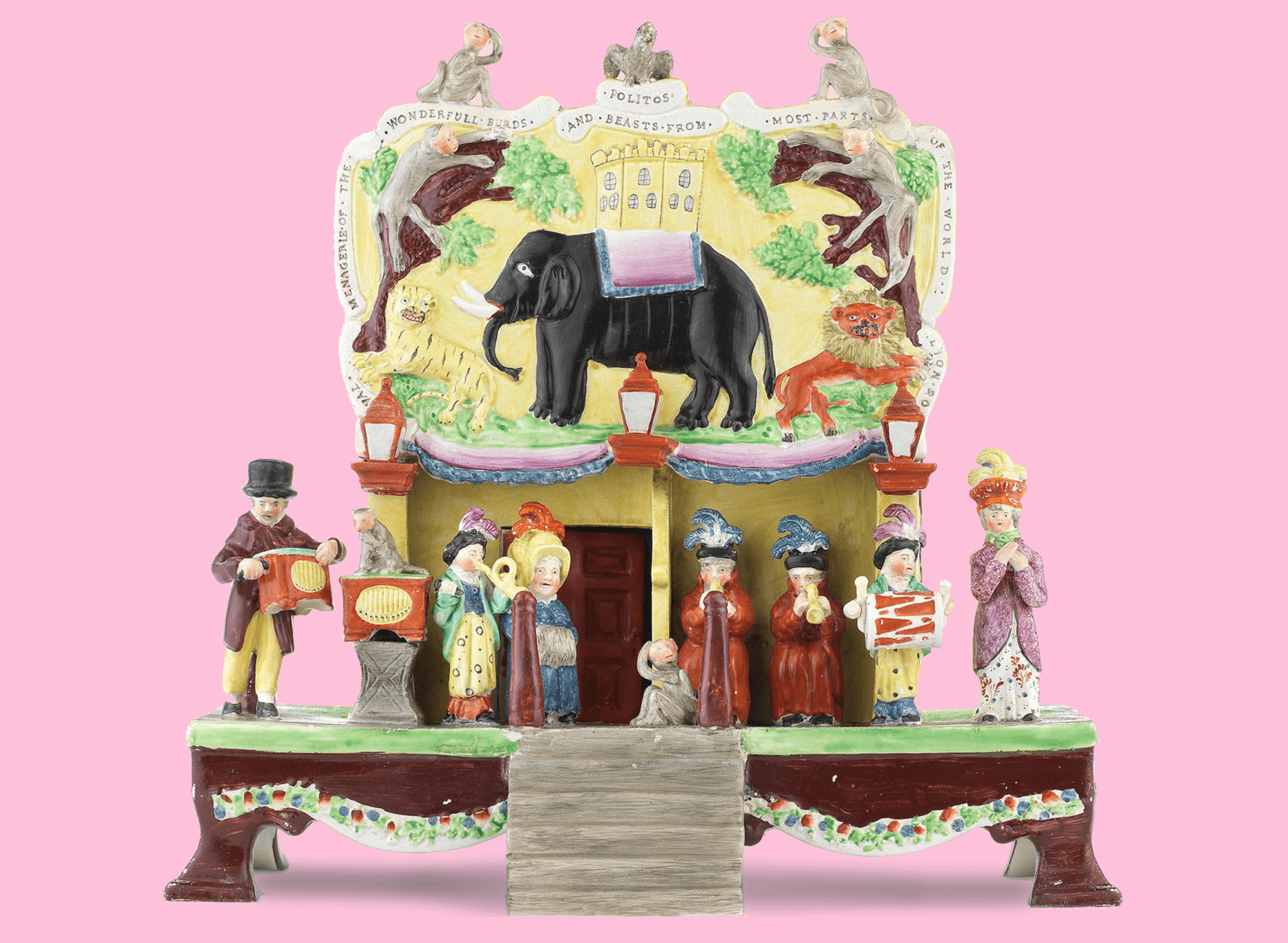I have three Welsh grandparents, but it was Grandma Evans I knew the most. It was because of her that my passion for old pots sparked as a young child. Grandad and Grandma Evans ran a small farm in what was then Cardiganshire, a county on the mid-west coast of Wales. I was fascinated by the old pitchers and blue and white plates on the dresser along with a pair of glass-eyed Staffordshire spaniels and a pair of cow spill vases.
I remember clearly one summer when they were “getting the hay in” and my grandparents having an argument. My grandfather wanted to complete the work on Sunday as the weather was perfect. My grandmother was adamant, there would be no work done on Sunday, it was the Sabbath and a day of rest. It was my first introduction to Methodism, which was embedded deeply in the Welsh culture and way of life. I also recall attending Welsh Chapel services, which were taken in Welsh, a language I did not understand. However, this did not matter as the singing was terrific, and the sermon from the vicar was full of expression and delivered in a riveting style with what the Welsh call Hiraeth. Hiraeth is an elusive term, and one description states, “a longing, a link to the past, it is in the rocks, in the waves, in the mountains, on the wind, it is home and always there.”
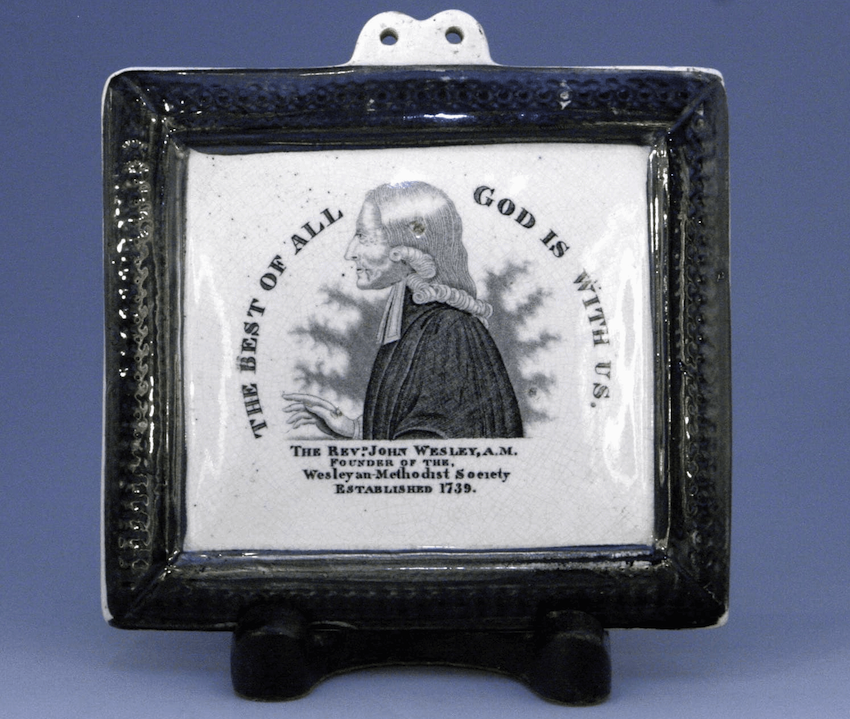
Wales was home to thousands of Methodist chapels built in the 18th and 19th century inspired by the preacher Reverend John Wesley and his movement. The Wesleyan Methodist Church proliferated in Britain, and its growth was most extensive in the expanding industrial areas, where the Methodist teaching and faith helped workers – both men and women – to endure economic hardship. The lessons encouraged them to live simply, which indirectly helped their financial status and health. One of Wesley’s quotes was: “Make all you can, save all you can, give all you can.”
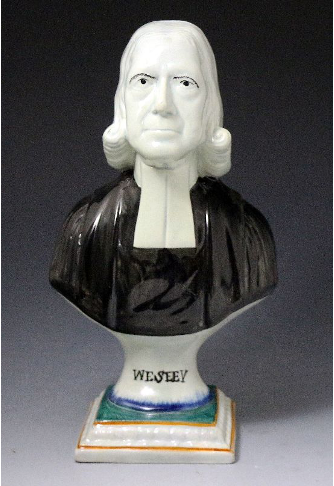
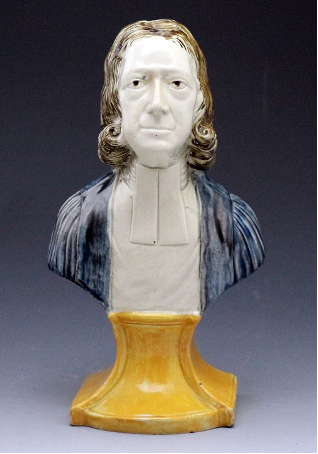
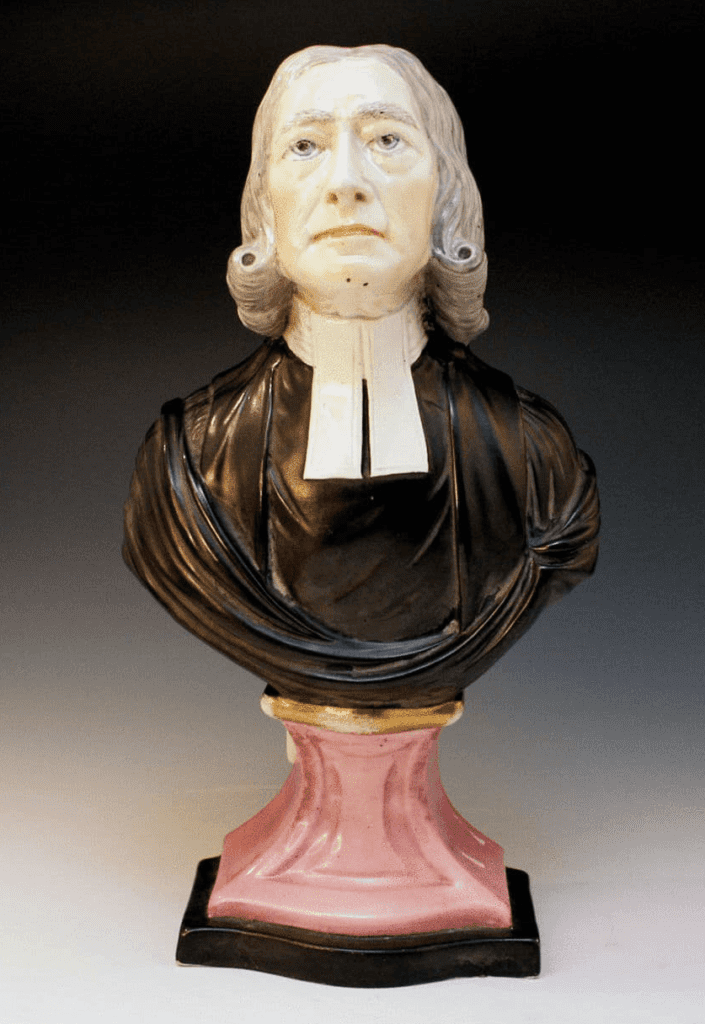
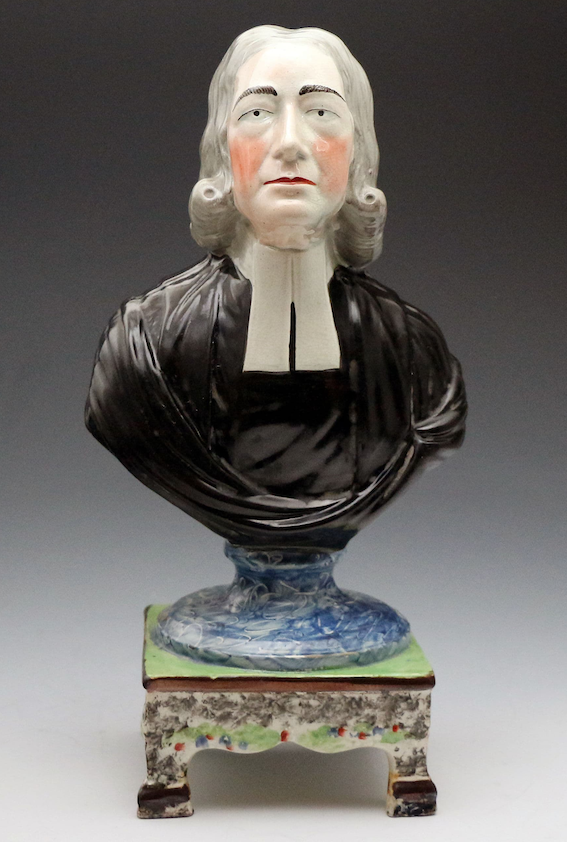
The virtue of thrift gave rise to one of the most endearing pieces of British pottery: the money box or bank. The most famous British pottery money box and one of the best produced is said to represent the Mexborough Wesleyan Chapel. Mexborough in Yorkshire was home to several chapels and the base for three pottery manufacturers: Emery’s, The Mexborough Old Pottery, and the Rock Pottery.
The money box stands 6.5 inches high and is decorated in underglaze pearlware in blue, green, and maroon. The tiled roof is cobalt blue, and the model is made standing on four ball feet. The Gothic-type windows are painted black, and the walls modelled to simulate formal stonework. The building is flanked by a pair of oversized garlanded cherubs, and this out-of-scale aspect is especially appealing, as are the inscriptions of name, date, and town in black across the front of the chapel. The boxes were usually presented as gifts, perhaps to commemorate a birth or birthday. This inscription has no doubt helped the survival of these pieces as they have passed down the generations. The boxes are especially evocative with the child’s name and inscription, encouraging and hopefully directing their future with this heartfelt gift. One can only wonder how their story unfolded.

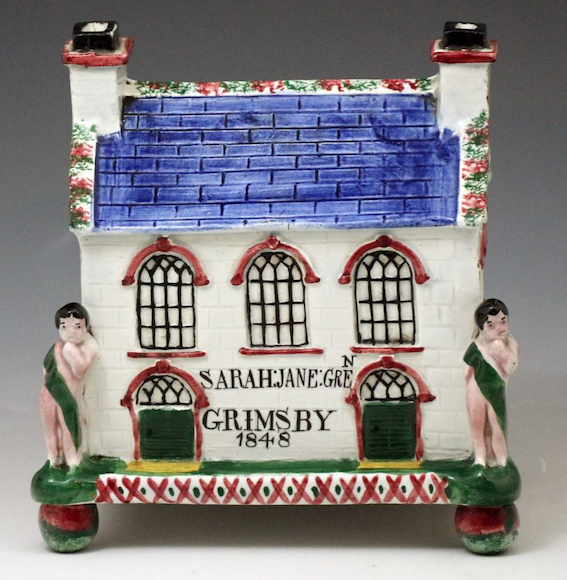
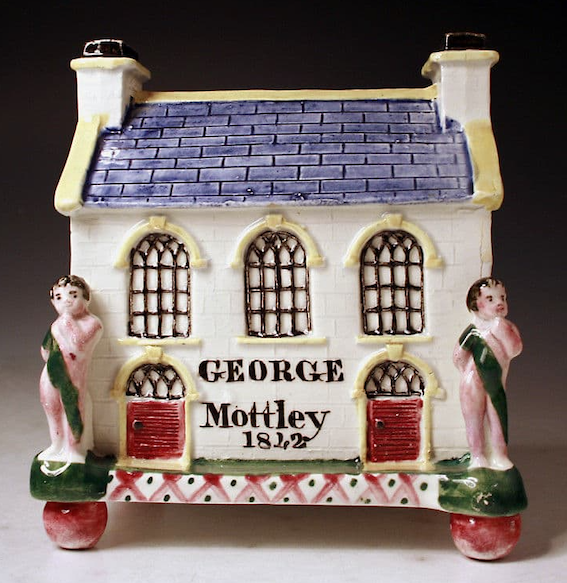
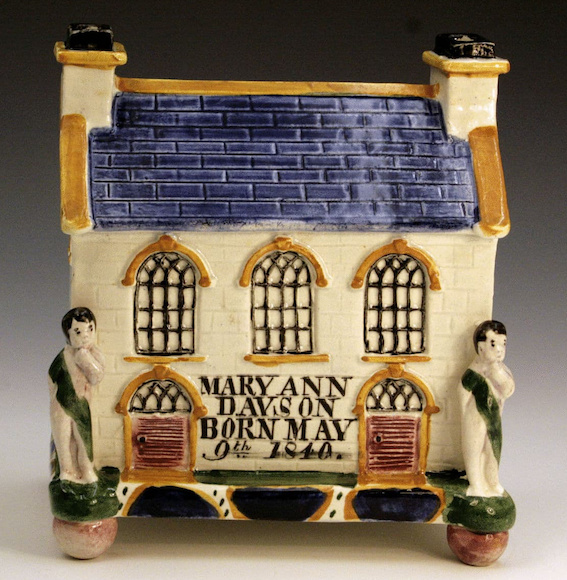
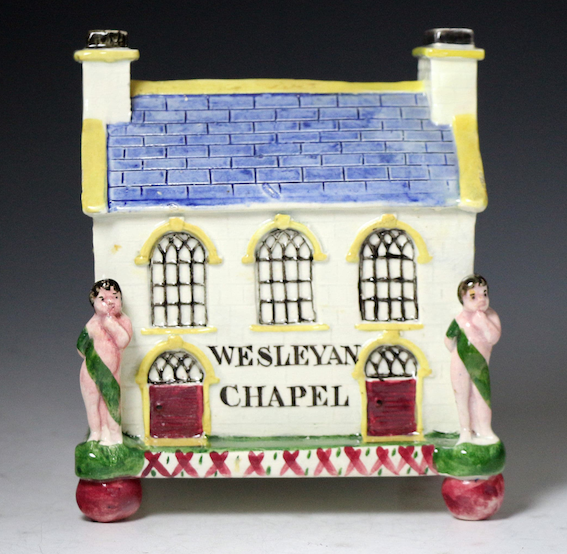
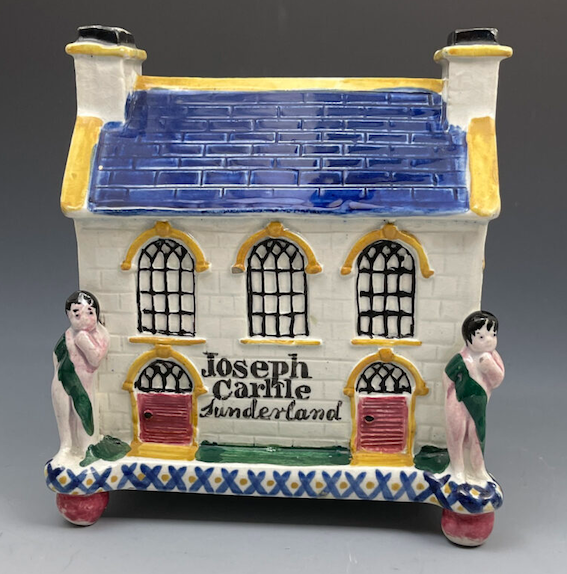
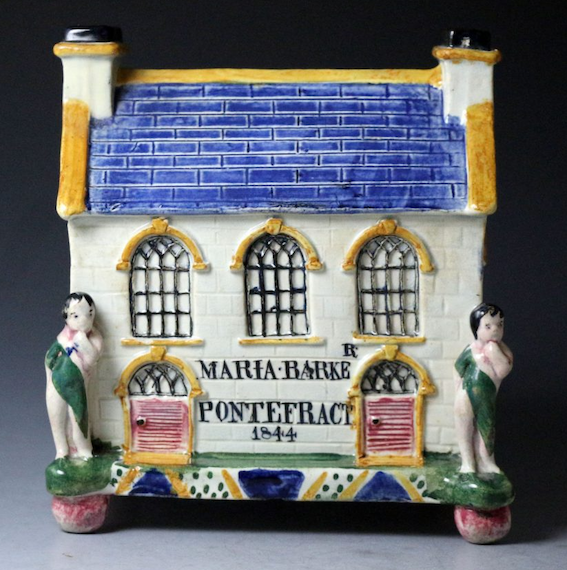
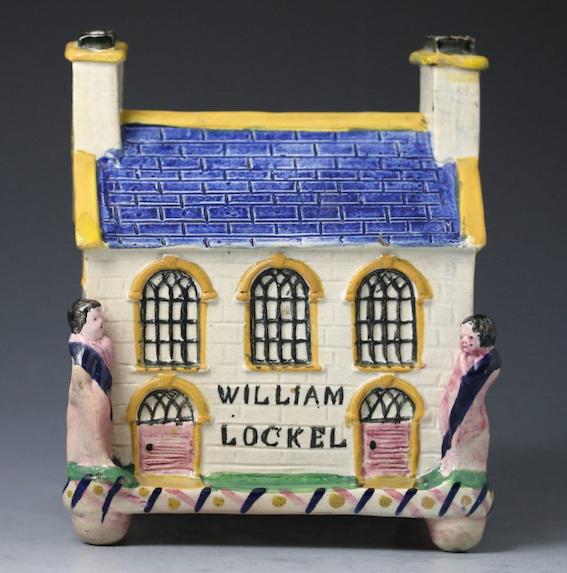

The money boxes are rare pieces, and I am lucky to be able to illustrate here some examples that have passed through my hands over the years. Attribution of these boxes has been made based on their similarity to a Wesley Chapel located in Bank Street in Mexborough and the tile on some of the pieces “Wesleyan Chapel”. Interestingly the chapel stood opposite the Rock Pottery.
As far as I know, there has been no positive attribution to the manufacturer. However, Keith Docker in an article written for the Northern Ceramic Newsletter (number 140, December 2005) suggests the possibility of the Emery Pottery formed in 1838 and closed in the 1850’s. This period corresponds with the dates found on the money boxes. He also suggested Hawley’s Pottery located just six miles away in Rotherham as a possible maker.
Sadly I have never seen an example with Mexborough in the title inscription, and perhaps one day, one will be found with the town attributed to their production. What is reasonable assumption is that the money box does represent the Mexborough Bank Street Chapel with its stylized windows, doors, and distinctive wide chimneys. However, one can never give a positive attribution without definitive proof, which is often elusive. For me, they will always be the MEXBOROUGH WESLEYAN CHAPEL MONEY BOX. The building still exists and is now a fast-food takeaway.
How times have changed.
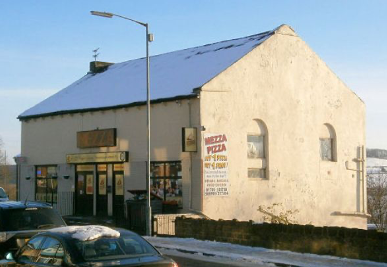
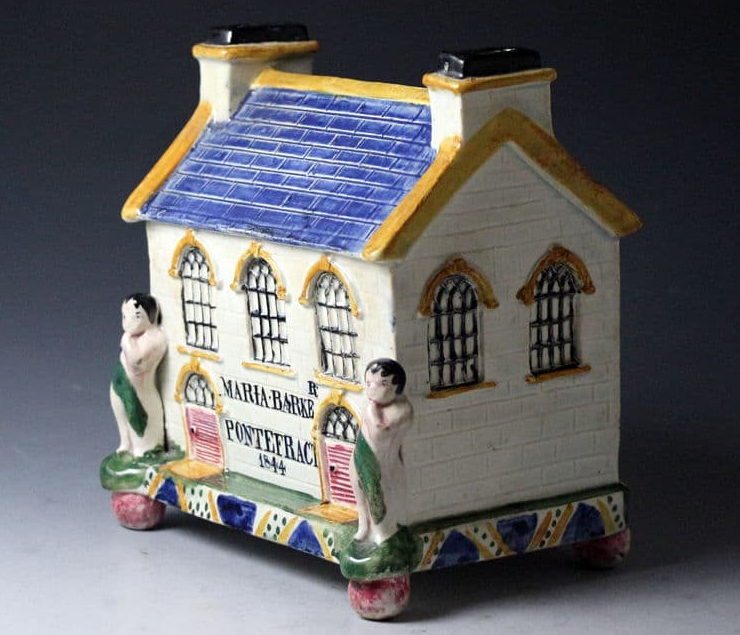
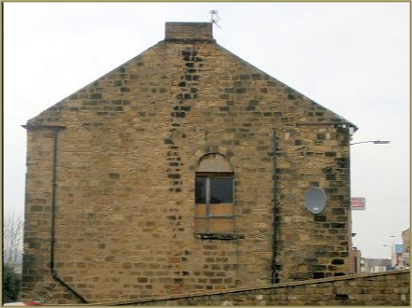
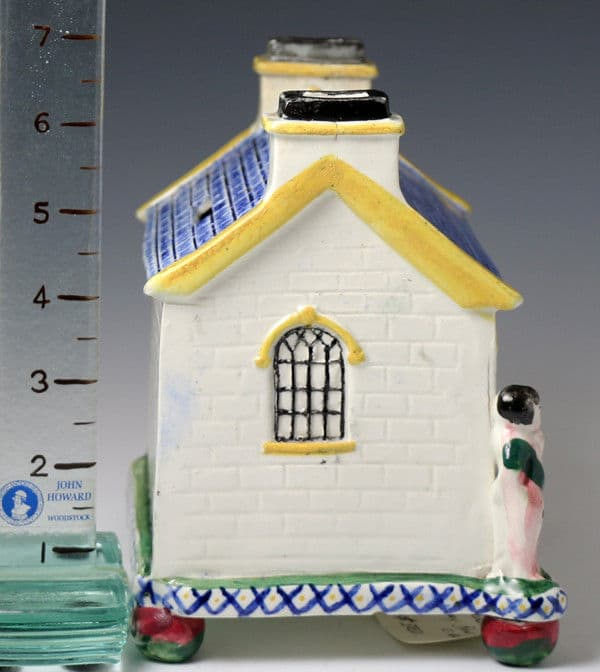
An earlier version of this article appeared in the Staffordshire Figure Association newsletter, a quarterly email publication of articles and news by and for our members. Join us to receive more expert insights and opinions.
John Howard is a specialist of British pottery from the 1650 to 1835 period. He commenced business in 1976 with a shop in Warrington, then moved to Aberystwyth in 1978, and then to Woodstock, near Oxford, in 2001 where he is still located. You can also find John Howard Antiques online, where you might be lucky to find a Mexborough Wesleyan Chapel Money box.
John has been Chairman of Ceramics vetting at Olympia Fine Art and Antiques Fair for 25 years, member of vetting teams at BADA Fair London. Past Chairman of the Cotswolds Art and Antique Dealers Association and a member of the British Antique Dealers Association. He has exhibited at Olympia Fine Art and Antique Fair, British Antique Dealers Association Fair London, The New York Ceramic Fair, and Haughtons International Fair at the Armory in New York and their Art Antiques Fair in Hyde Park London.


